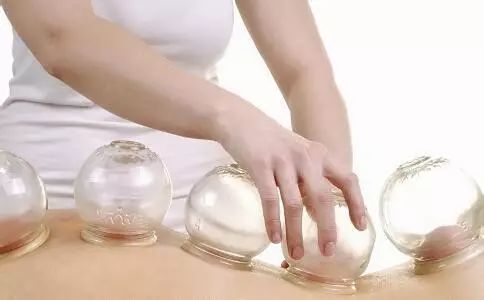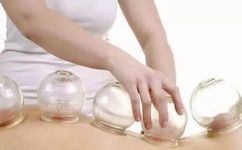Cupping Techniques
1. Retention Cupping
This is the most commonly used method of cupping, also known as stationary cupping, which involves placing the cup on the skin and leaving it for a period of time. The retention time ranges from 5 to 20 minutes, depending on the patient’s condition, the disease, and the season. Generally, in summer and on thinner skin areas, the retention time should not be too long.
Retention cupping has two forms:

One is single cup cupping, which uses a single cup and is suitable for small areas of pathology.
The other is multiple cup cupping, also known as dispersive cupping. The cups are generally placed along the muscle bundles, nerves, or meridian pathways. If the body is strong, the cups can be placed closer together; if the body is weak, they should be spaced further apart. This method is suitable for broader areas of pathology.
2. Flash Cupping
Flash cupping involves holding a cup in one hand and using tweezers to hold a cotton ball soaked in alcohol or a cotton ball tied to a wire, igniting it, and then quickly removing it to place the cup on the patient’s affected area. The cup is then immediately removed, and this process is repeated several times until the skin becomes red and shows bruising. This method is suitable for areas where the muscles are more relaxed.
3. Sliding Cupping
Sliding cupping, also known as push cupping or pull cupping, involves selecting a cup with a larger opening, thicker walls, and a smooth, undamaged surface. A thin layer of lubricant, such as liquid paraffin, petroleum jelly, or other vegetable oils, is applied to the area to be cupped. After using the flash or fire cupping method to create suction on the skin, the cup is held at the base and tilted slightly to slide it back and forth. The directions can be forward, backward, left, right, and can also include rotation. This is repeated several times until the skin becomes red and shows bruising. It is suitable for large, flat areas of the body with thick, firm muscles, such as the back and lower back.
Effects of Cupping

Cupping therapy has therapeutic effects of invigorating qi and blood, dispelling cold pathogens, and alleviating pain and swelling. It is suitable for conditions such as shoulder periarthritis, cervical spondylosis, rheumatoid arthritis, neuralgia, low back pain, trigeminal neuralgia, and sciatica.
Cup Mark Colors:
1. Dark purple-black cup marks: Generally indicate insufficient blood supply and poor circulation with blood stasis.
2. Purple cup marks with patches: Generally indicate cold congealing and blood stasis.
3. Cup marks with scattered purple spots of varying shades: Indicate qi stagnation and blood stasis.
4. Bright red cup marks: Generally indicate yin deficiency, both qi and blood deficiency, or excess fire due to yin deficiency.
5. Dark red cup marks: Indicate high blood lipids and the presence of heat pathogens.
6. Gray-white cup marks that feel cool to the touch: Often indicate deficiency cold or damp pathogens.
7. Cup marks with skin texture or slight itching: Indicate wind pathogens or damp conditions.
8. Moisture on the inner wall of the cup: Indicates dampness in that area.
9. Blisters on the cup marks: Indicate heavy internal dampness; if the blisters contain blood, it is a reaction to damp-heat toxicity.
Precautions for Cupping
1. After gua sha and cupping, do not take a cold shower or drink cold beverages for two hours. If taking a shower after two hours, use warm water.
2. During gua sha and cupping, do not use air conditioning or fans to avoid air convection.
3. Do not perform cupping on an overly full or hungry stomach; wait at least one hour after eating.
⊙Note: The content of this article is for the purpose of popularizing TCM knowledge and is not intended as a prescription. Please consult a physician for any medical needs.
⊙ Submission email: [email protected] (Original submissions are welcome)


Stomach health, qi and blood deficiency, hypertension, gray hair, allergies, foot baths, hair loss, coix seed, anemia (blood tonifying), pharyngitis, stomach nurturing, spleen deficiency, bathing, oral ulcers, bad breath, cold in the uterus, effects of coix porridge, regulating spleen and stomach, colds, cough, hiccups, insomnia, cold intolerance, cold hands and feet, low back pain, sore throat, dampness dispelling, kidney tonifying, height and weight chart, vegetable pairing taboos, sleeping naked, finger massage, acne, cervical spondylosis, cardiovascular diseases, spot removal, blood tonifying, leg slimming, safe period, breast self-examination, body cold, dysmenorrhea, weight loss, sexual health issues, endocrine issues, gynecological issues, health tests, constitution tests, standard three measurements test (bust, waist, hip), body mass index self-test, standard weight
Diagnosis: Hand diagnosis, tongue diagnosis, observation diagnosis, kidney yang deficiency, kidney yin deficiency,

